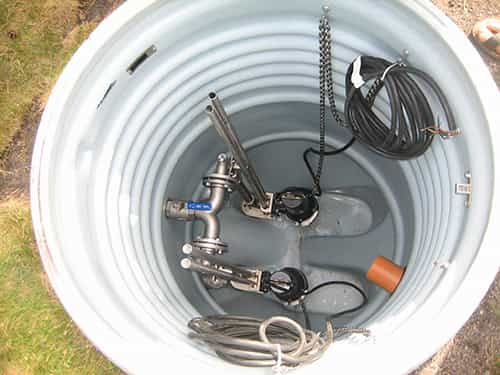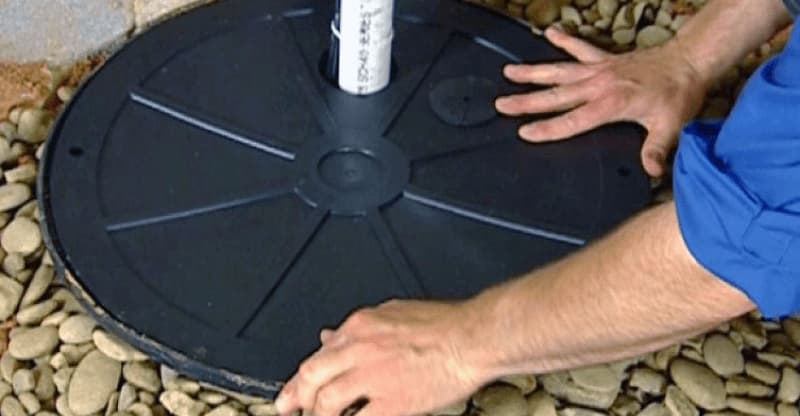Want to add extra drainage to your yard but to prevent flooding but don’t have extra room? The answer to your drainage issue may be a vertical french drain. A vertical french drain is the same as a normal french drain except it is built vertically into the ground instead of horizontally across the yard.
In this article we will teach you everything you need to know about vertical french drains so you can solve your backyard drainage problem and prevent standing water from damaging your lawn and foundation. These drains are similar to a traditional french drain but have a few key differences – keep reading to learn more!
Keep reading to learn everything you need to know about vertical french drain!
Why Install a Vertical French Drain
Here are the main reasons to choose a vertical french drain for your drainage system.
Increased Drainage
The main reason to install a vertical french drain is the increased runoff drainage in one specific area of the yard. These drains can be installed as deep into the ground as necessary and use gravity to drain excess water into the surrounding soil.

Protect the Grass
Another common reason is to protect the grass in your yard. Standing water for heavy rains or floods can kill the grass and permanently damage the soil. A french drainage solution can be used to safely drain water into the surrounding soil without damaging the surrounding yard.
Prevent Basement Flooding
A basement flood can cause thousands of dollars in damage and cause mold to grow in your home. Installing a proper exterior drain (like a vertical french drain) can route flood water away from the inside of your basement and make it easier for your sump pump to keep things dry.
Read More:
Dry Wells vs French Drains
Dry Wells vs Leach Fields
Prevent Foundation Damage
The final reason to install a vertical drain system is to protect your foundation. Shifting soil due to above ground flooding can damage your foundation and eventually cause cracks or other problems. Draining surface water deep into the ground and away from your foundation is an easy way to protect your foundation and basement. The risk is even higher if you live in an area with clay soil.
How to Build a Vertical French Drain
Tools
- A shovel – For starting to dig the drain line
- An auger – For digging deep holes for deep drainage
- Perforated or Corrugated Pipe – Drainage pipe for routing water and the shell of the drain
- Pea Gravel or Sand – For the inside of the drainage holes
- Landscape Fabric – For holding back the surrounding soil
- Catch basin drain tile – A catch basin for the bottom of the french drain system
Step by Step Instructions
1 – First identify the best area to install the french drain. We recommend choosing an area where water is pooling in your yard. Make sure to dig at least 10 feet away from your foundation or your new drain could harm your foundation and do more harm than good.
2 – Second, start digging with a shovel and dig down as far as you can before you can’t go any further. Make sure to have a helping hand so you don’t get in over your head. The drain should be between 1 and 4 feet wide.
3 – Next, use a drill to dig down another 3 to 5 feet, depending on the soil in your area. This will increase the drainage and allow water to flow underground during heavy flooding. Install proper support so the drain does not cave in during construction or cause a sinkhole. Using a drill will allow you to dig deeper drainage holes than just a shovel.
4 – Then, install the perforated pipe, filler sand, gravel and landscape fabric. We recommend using sand in the area dug out using an auger and gravel for the rest of the drain pipe. Landscaping fabric should be used to line the exterior of the drain to prevent soil from seeping in over time.
5 – Finally, install a covering that fits in with decor of your yard – but is still noticeable so you don’t trip over it in the dark. We recommend lining the exterior of the surface drain with larger rocks and boulders to create a natural barrier around the drain.
If you have a downspout from your gutters it might be a good idea to run a PVC pipe and water directly into the french drain instead of draining water into the yard.
Avoiding Sink Holes
Ground water can cause a sink hole in some circumstances. Make sure your french drain installation is built on solid ground and has a solid exterior foundation of geotextile fabric, gravel, and a sturdy retaining wall to avoid sink holes and dangerous cave ins.
The key is to dig at angles that are supported by your soil. We recommend digging and consistent angles and only digging with shovel to 10′ at a maximum.
Differences from Traditional French Drains
Vertical drains use many of the same parts as a traditional exterior french drain the biggest difference is that there is not an extended trench drain with perforated pipe running across the yard instead the drain is buried vertically in the ground.
Frequently Asked Questions
Can a French drain be verticals?
Yes, traditional french drains are installed horizontally but they can also be installed vertically into the ground.
How deep does a Vertical French drain need to be?
A vertical french drain should be at least 3′ deep and a maximum of 15′ deep.
Does a French drain have to be straight?
French drains do not have to be perfectly straight but there can’t be more than a 30′ curve for best drainage.
Can I make a French drain without pipe?
A french drain can be built without a pipe but then it is basically a dry well but the effect will be similar.
Learn More:
Best Gravel for French Drains
French Drain Gravel Calculator
French Drain Gravel Size Guide


